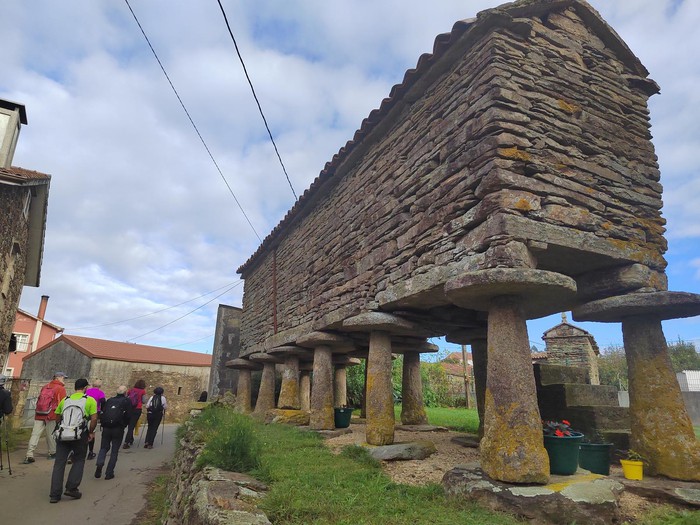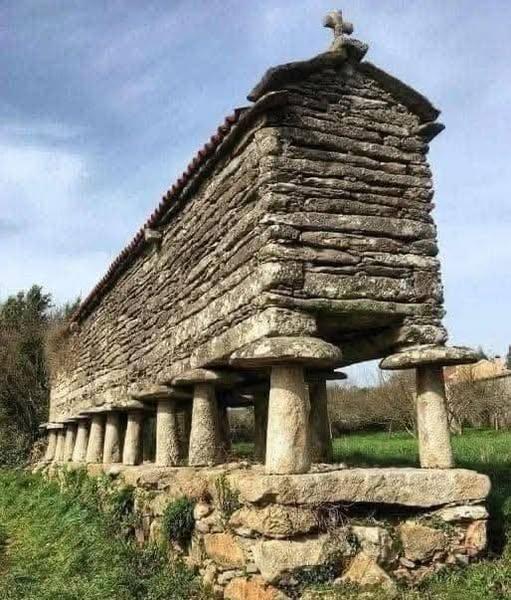The Silent Granary of Ourense

On March 14, 1911, in the mist-shrouded hills of Ourense, Galicia, surveyors tracing ancient pathways encountered a structure that defied classical classification. Rising silently on a dozen granite stilts, each topped with circular “mushroom” caps, the building seemed to float above the earth—a spectral form that evoked not shelter, but symbol. Its long, coffin-like body, carved from monolithic slabs of weathered stone, had no doors, no windows, and no discernible interior.

Local lore simply calls it an hórreo—a granary elevated to keep vermin at bay. But unlike others of its kind, this structure’s austere precision and sepulchral grace have stirred deeper questions. Why the seamless, almost airtight joints? Why the deliberate inaccessibility? And why the shape—evocative of a vessel, a sarcophagus, or even a codex in stone?

To some, it whispers of a forgotten agrarian cult, where harvest was a metaphor for rebirth, and grain was stored not just as sustenance but sacred offering. Others suggest it may be a kind of petrified mnemonic device—an architectural cipher designed to preserve knowledge, not crops. On the fringes, comparisons have been made to the “sky vaults” of pre-Columbian Andean cosmology, hinting at an improbable, ancient exchange across oceans—or perhaps at a lineage far older than either tradition remembers.

Whatever its origin, the silent structure in Ourense refuses to yield its secrets, standing as a riddle in stone—part barn, part monument, part machine.











